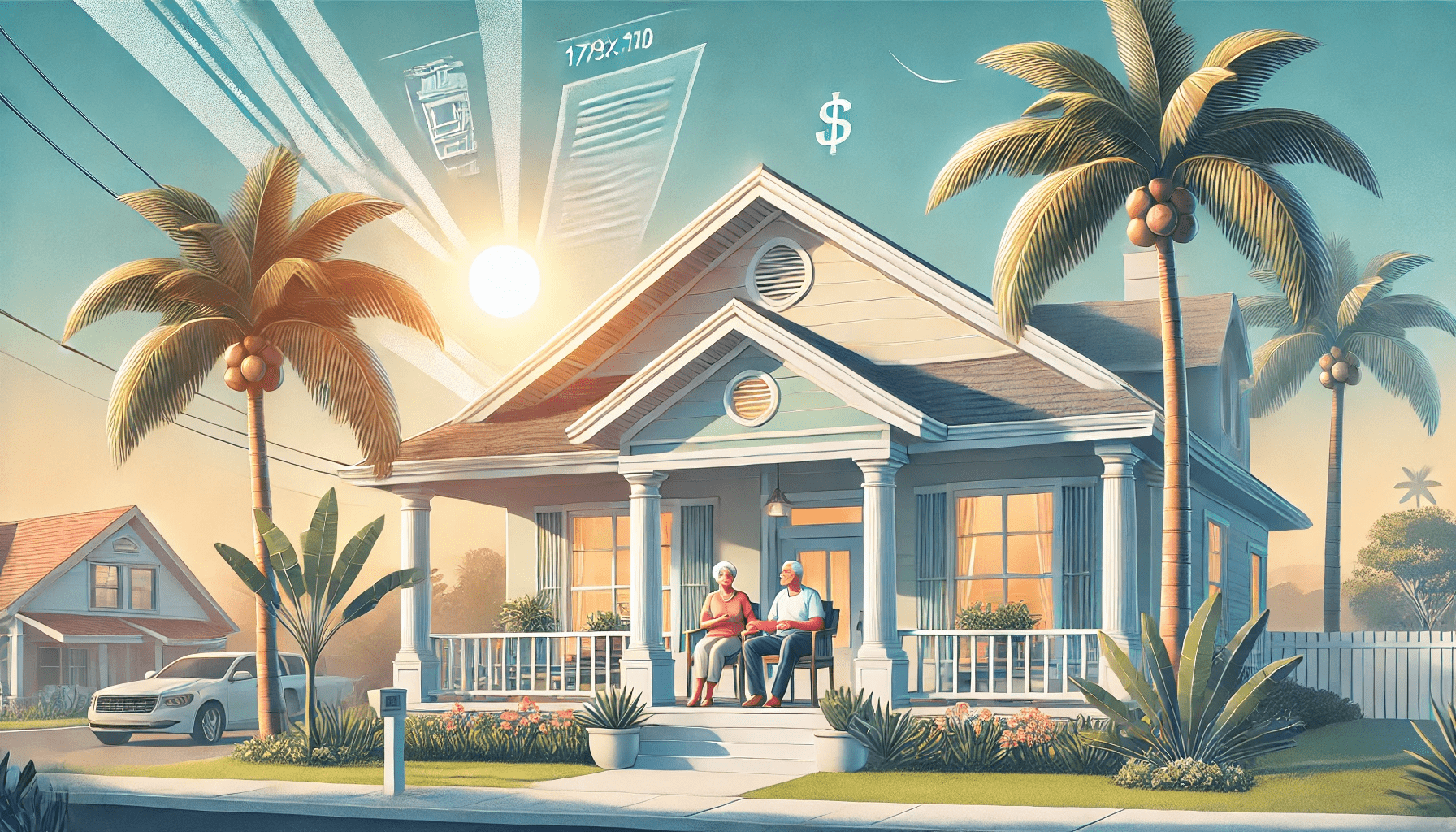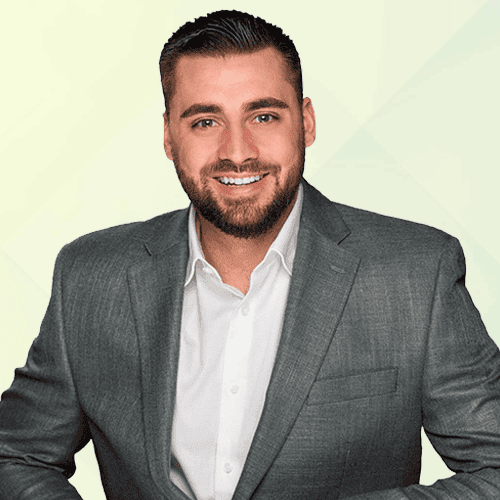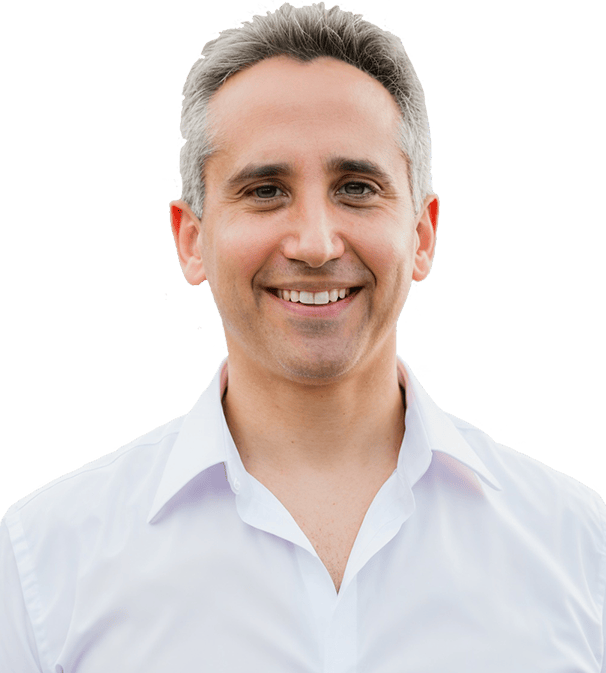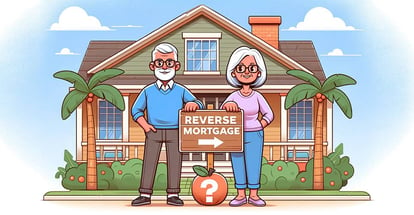How Does a Reverse Mortgage Work in Florida: Simplified Explanation
A reverse mortgage in Florida allows homeowners aged 62 and older to tap into their home’s equity without selling or moving.
This financial tool enables retirees to access cash for expenses, using their home as collateral, and studies show that reverse mortgage borrowers often report higher financial and housing satisfaction.
Verify Your Reverse Mortgage Eligibility
In this article, we’ll break down how reverse mortgages work in Florida, covering key benefits, requirements, and important considerations.
In this article (Skip to...)
How reverse mortgages are different from traditional mortgages
Unlike a regular loan, a reverse mortgage works in the opposite way.
With a regular loan, you make payments that reduce what you owe and increase your ownership in the home.
But with a reverse mortgage, you don’t make regular payments; instead, as you take out money and interest adds up, the amount you owe grows, and your share in the home’s value gets smaller.
You can choose to pay some or all of the interest or any amount you want at any time. Plus, there are no regular payments required, and you won’t face any penalties if you decide to pay off the loan fully.
Verify Your Reverse Mortgage Eligibility
How much money are you eligible for
The funds you can receive from a reverse mortgage typically range from 40-60% of your home's appraised value. The amount you can receive depends on your age, as loan amounts are primarily determined based on your life expectancy and current interest rates.
Several factors influence the loan amount in a reverse mortgage, including:
-
The age of the youngest borrower.
-
The value of the home or the 2023 lending limit, whichever is lower.
- The interest rates in effect at the time.
Additionally, other factors that affect the loan amount are:
-
Costs associated with obtaining the loan, which are subtracted from the Principal Limit.
-
Existing mortgages and liens, which must be paid in full.
- Any remaining funds after paying off costs, mortgages, and liens belong to you or your heirs.
Verify Your Reverse Mortgage Eligibility
How age affects the amount available
To be eligible for a reverse mortgage, you must be at least 62 years of age.
The Principal Limit of the loan is determined based on the age of the youngest borrower, as the program uses actuarial tables to estimate how long borrowers are likely to accrue interest.
For example, a 62-year-old borrower with a $300,000 home might have access to roughly $150,000 in loan proceeds, while an 82-year-old with the same home value could access closer to $210,000.
This difference occurs because the older borrower is expected to accrue interest over a shorter period, allowing HUD to set a higher starting limit.
If there are multiple borrowers, the Principal Limit may be lower, as the terms of the reverse mortgage allow all borrowers to live in the home for the remainder of their lives without making payments.
Verify Your Reverse Mortgage Eligibility
Reverse mortgage payment options
Borrowers have several ways to receive funds from a reverse mortgage:
- Cash lump sum at closing
- Line of credit to draw from as needed
- Fixed payments for a set period (term payments)
- Lifetime payments while living in the home (tenure payments)
They can also mix these options.
For example, a Florida couple with a $500,000 home might take $100,000 upfront for home improvements and college funds, then receive $1,000 monthly for four years until a larger Social Security benefit begins.
This setup would also leave $125,000 in a credit line for future needs, which grows over time if unused.
Verify Your Reverse Mortgage Eligibility
How the line of credit growth rate works
In the past, reverse mortgages were often viewed as a last resort. Now, imagine a borrower who wants to plan ahead—she has enough income now but is concerned about future expenses. She decides to get a reverse mortgage with a $200,000 credit line after covering loan costs.
Any unused credit grows at the same rate as the interest and insurance costs that would have applied if she had borrowed it. So, her available funds increase over time, giving her more access if needed:
10 years - $350,000
15 years - $500,000
20 years - $660,000
If interest rates go up by 1% in year three and another 1% in year seven, her credit line after 20 years could be over $820,000.
Of course, it's essential to remember that this credit line is not considered income, and any borrowed funds will accrue interest. The borrower or their heirs will need to repay the loan when the property is sold.
Nevertheless, a reverse mortgage can provide a unique opportunity to ensure access to a substantial amount of funds, ranging from $660,000 to $800,000, over a 20-year period.
Verify Your Reverse Mortgage Eligibility
Tip #1 - Shop interest rates & closing costs
Shop around for the best interest rates, lender credits, and closing costs on a reverse mortgage.
Some lenders offer credits to help cover upfront costs, so ask about options available to you.
If preserving equity is a priority, consider a lower margin to reduce interest accrual, but if you want to maximize credit line growth, a higher margin may be better.
Focus on your long-term plans to ensure the loan aligns with your financial goals.
Tip #2 - Weigh the costs vs. benefits
Consider whether a reverse mortgage truly meets your financial needs and improves your quality of life.
If you’re likely to sell your home in a few years, it may be wiser to sell sooner and preserve your equity.
Remember, a reverse mortgage is typically intended as a long-term solution, so if this isn't your forever home, explore using it to purchase a more suitable property.
In general, with careful research and planning, many borrowers can benefit from reverse mortgages.
It's crucial to understand how these loans work, have a clear understanding of your financial goals, and carefully evaluate which options will best align with those goals.
Frequently Asked Questions From Our Readers
Here are our readers most asked questions about reverse mortgage in Florida:
Who owns the house in a reverse mortgage?
In a reverse mortgage, you retain ownership of your home at all times. Unlike a traditional or "forward" loan, you are not selling your property to the lender.
Instead, you are simply taking out a loan that operates differently. Rest assured, you maintain full ownership of your home while benefiting from the unique features of a reverse mortgage.
How does a reverse mortgage get paid back?
A reverse mortgage does not necessitate monthly mortgage payments, as the loan is repaid when it reaches maturity or when the homeowner decides to sell the home or pay it off through other means.
In the event of the borrower's passing, the heirs of the property have options. They can either pay off the loan balance to retain ownership of the property, or sell the home to settle the outstanding loan balance.
If the loan balance exceeds the current market value of the property, heirs are not obligated to repay the loan or sell the property. They can choose to sign the property over to the servicer, who will handle the process from there.
Any potential loss incurred in the sale is covered by the mortgage insurance fund.
Can I sell my house if I have a reverse mortgage?
Certainly! With a reverse mortgage, there are no prepayment penalties, which means you can sell your house at any time without incurring any additional fees for paying off the loan early.
Is a reverse mortgage a good idea?
Reverse mortgages are not inherently positive or negative. It's crucial to carefully evaluate your individual circumstances and long-term suitability before deciding to take out a reverse mortgage.
If staying in your home for the foreseeable future and utilizing a reverse mortgage can improve your quality of life, it may be a great option.
However, if you have plans to relocate later in retirement, you may want to explore alternatives such as a reverse mortgage for a home purchase or other home equity loans.
Proper consideration of your unique situation is key to making an informed decision.
Bottom Line
Whether you prefer a lump-sum, a line of credit, or monthly payments, there’s no doubt that reverse mortgages can be a great option for those who own real estate in the Sunshine State.
If you’re ready to take the dive and explore if this type of loan could help your long term financial goals, we are here to help answer your questions and guide you through each step of the process.
Reach out today and get started empowering yourself with strategic financial planning made possible with reverse mortgages from MakeFloridaYourHome.
With over 50 years of mortgage industry experience, we are here to help you achieve the American dream of owning a home. We strive to provide the best education before, during, and after you buy a home. Our advice is based on experience with Phil Ganz and Team closing over One billion dollars and helping countless families.
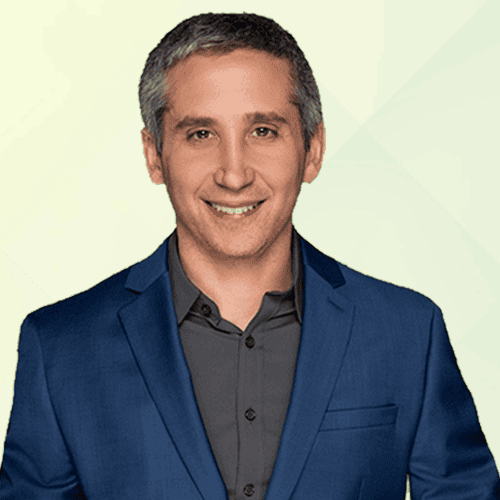
About Author - Phil Ganz
Phil Ganz has over 20+ years of experience in the residential financing space. With over a billion dollars of funded loans, Phil helps homebuyers configure the perfect mortgage plan. Whether it's your first home, a complex multiple-property purchase, or anything in between, Phil has the experience to help you achieve your goals.


 By
By  Edited by
Edited by 